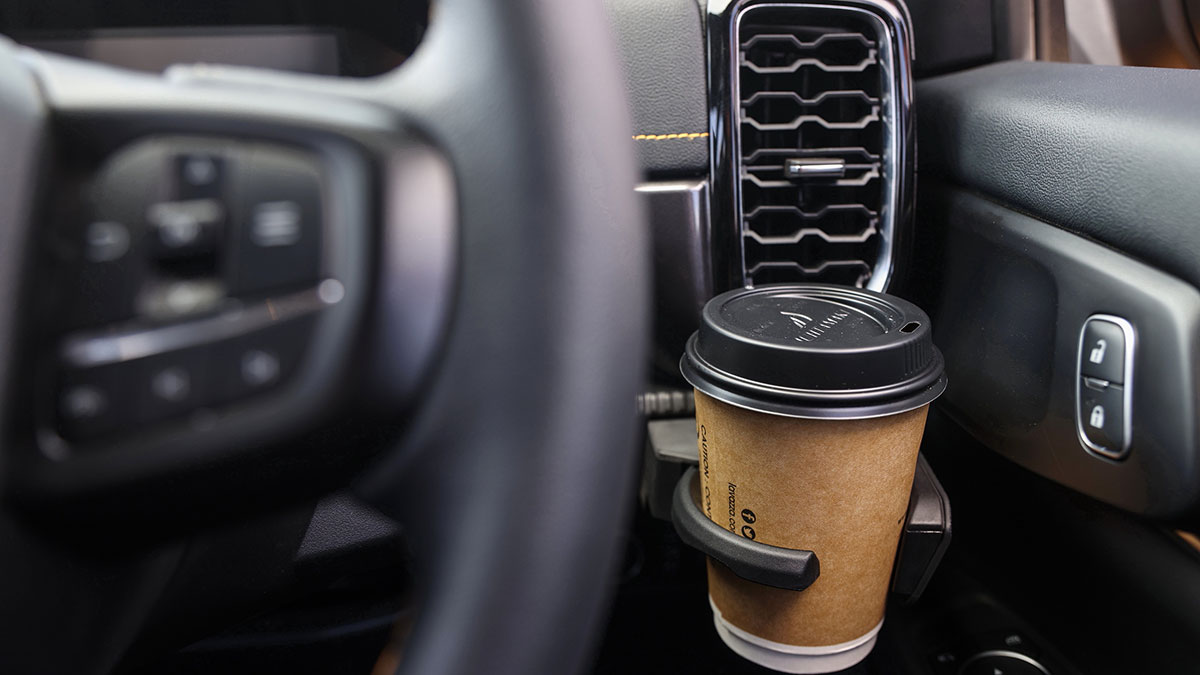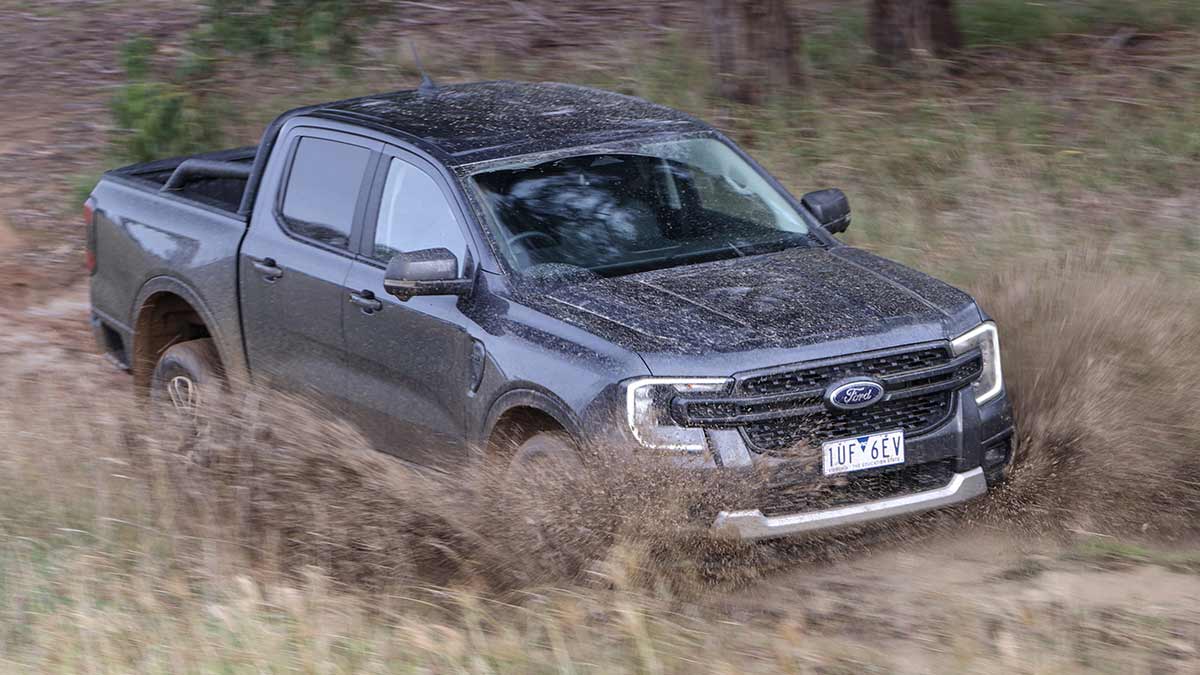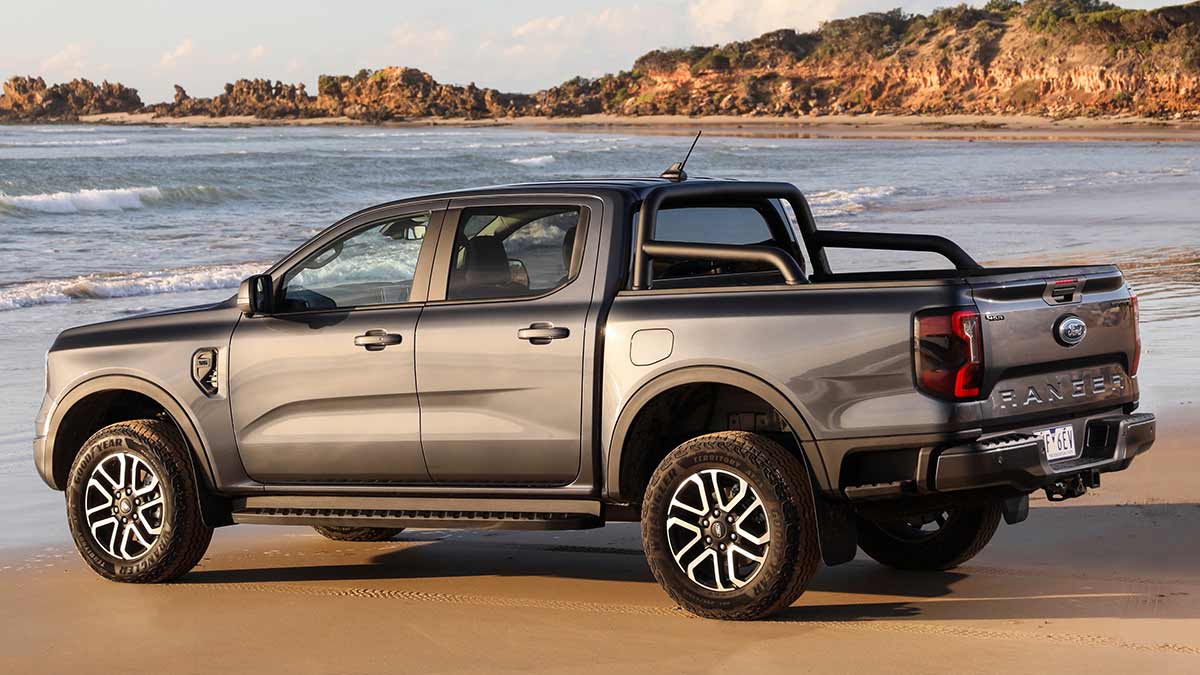The Xpeng G6 reads like a bona fide Tesla Model Y rival, but does that translate from the brochure to reality? Here we’re testing the more expensive G6 Long Range, which lives up to its name with a 570km claimed range.
Worth the wait: 2022 Ford Ranger first drive review

The 17,000-strong buyer queue for the new Ranger all but ensures the four-door ute will be the most popular vehicle in Australia this year.
The latest generation of the Ford Ranger ute is finally in dealerships... but unless you’ve pre-ordered, there are already thousands of wannabe owners ahead of you. The queue could get even longer, as those pre-orders came before any media reports and before prospective buyers could test drive one.
Some versions on the Ranger will still be in dealerships now, but if you want the shiniest new toy in the form of the V6-powered Ranger Wildtrak with the “Premium Pack” option, the wait time is out to nine months.
Ford had expected around 20 per cent of Wildtrak customers to spend the extra $1,500 on the optional pack, which bundles matrix LED headlamps with a 10-speaker Bang & Olufsen sound system, and a roof-mounted accessory switch control panel. Instead, the demand was around 80 per cent.
As a result, expect to see near-new examples for sale in online classified sites with an appreciable mark-up on the recommended retail price, as occurred with the Toyota LandCruiser 300 Series.
Ford expects to deliver 10,000 Rangers in the next eight weeks in a bid to dent the queue (and stop speculative pricing from owners and inflated delivery fees by dealers)
On this page
- How much does the Ford Ranger cost?
- Is the Ford Ranger safe?
- What features does the Ford Ranger have?
- What's under the Ford Ranger's bonnet?
- Is the Ford Ranger efficient?
- How does the Ford Ranger drive?
- Should I buy one?
How much does the Ford Ranger cost?
This generation of the Ranger spans six versions, including the yet-to-launch Raptor.
Prices for a four-wheel-drive four-door ute start at $49,930 for the fleet-friendly XL powered by a 2.0-litre turbodiesel engine and a six-speed automatic
The XLS justifies the stretch to $54,330 with a 2.0-litre twin-turbodiesel and a 10-speed automatic transmission.
The step to the better-appointed XLT is $61,190 for the same drivetrain. The V6 also becomes available in this specification and that involves spending another $3000.
The newly introduced Sport variant then extends to $63,690 for the 2.0-litre biturbo and $66,690 for the V6
Want a Wildtrak (and most private buyers do) and the price climbs to $67,190 for the four-cylinder and $70,190 for the six-cylinder.
Capping the range is the Ford Ranger Raptor, which costs $85,490 for a 3.0-litre V6 twin-turbo engine paired with the 10-speed auto.
It differentiates itself from the previous generation Raptor by being petrol-powered rather than consuming diesel. Put that down to the fact the Ranger is now on sale in the USA and Americans are generally not disinterested in diesel vehicles unless they’re a full-size (F150, RAM 1500 and Chevrolet Silverado-style) truck.
The upside is the petrol model, while it will feature a reduced range, boasts significant power and torque rises over the previous 2.0-litre biturbo diesel. Tow more effortlessly, refuel more regularly.
Servicing intervals for the regular Rangers are 12 months or 15,000km and Ford says buyers won’t pay more than $329 for the first four dealership visits.
|
Ford Ranger |
XLT: $61,190 Sport: $63,690 Wildtrak V6: $70,190 |
|---|---|
|
Toyota HiLux |
SR: $50,645 SR5: $58,680 Rugged X: $70,750 |
|
Mazda BT-50 |
GT: $57,390 SP: $63,390 Thunder: $68,290 |
|
Isuzu D-Max |
LS-U: $59,000 LS-U+: $63,500 X-Terrain: $67,500 |
|
Nissan Navara |
ST-X: $55,770 Pro-4X: $58,730 Pro-4X Warrior: $68,090 |
|
Volkswagen Amarok |
TDI550 Sportsline: $57,990 TDI580 Highline: $63,490 TDI580 Adventura: $73,990 |
|
Mitsubishi Triton |
GLX-R: $47,190 GLS: $48,940 GSR: $55,690 |
*Prices accurate at time of publish
 Is the Ford Ranger safe?
Is the Ford Ranger safe?
ANCAP hasn’t yet got its hands on the latest Ford Ranger. The preceding version was a five-star vehicle and the global aspirations of the Ranger (it will be sold in 180 countries) should see this model match that performance, not least because many companies won’t buy a vehicle for their staff that doesn’t have the top-tier ANCAP endorsement.
The default safety suite is impressive, with nine airbags lane-keep and blind-spot assist, rear parking sensors, and the expected array of autonomous emergency braking functions including rear cross-traffic alert.
Front parking sensors are standard from the XLS up, while the XLT, Sport and Wildtrak versions add adaptive cruise control with stop-and-go functionality, traffic sign recognition and lane centring.
Wildtrak owners then have a 360-degree camera and automated parking.
What features does the Ford Ranger have?
All Ford Ranger four-wheel-drive, four-door utes have steel underbody protection and a rear differential lock as standard, along with capping on the top of the tub with integrated fixing points for mounting accessories like cross-rails (and Ford has partnered with ARB to develop a huge array of add-ons, from bull bars to canopies).
One of the most appreciated touches on the new Ranger will be the step built into the body just behind the rear wheel. It makes accessing the gear you have stowed in the tub much easier and is a more comfortable, and safer, option that stepping on the tyres.
Towing capacity is 3500kg across the 4WD, four-door range and payload capacity runs from 1204kg in the XL to 958kg and 959kg in the XLS and XLT bi-turbo vehicles, 949kg in the XLT V6, 942 kg in the Sport with the bi-turbo or 934kg with the V6 and 939kg in the bi-turbo Wildtrak or 951kg with the V6.
The rear shock absorbers have been relocated to an “outboard” position, largely to improve space in the tub. Consequently, a euro-style pallet will fit in the tub of all variants.
While the Ranger was engineered in Australia, the location of the bonnet release in the passenger’s footwell is an indication the USA led the project development.
The range rundown looks like this:
Ford Ranger XL
Power windows front and rear, single-zone climate control, remote start using the smartphone-installed “FordPass” app, wireless Android Auto and Apple CarPlay and a 10.1-inch touchscreen are standard, as is an 8.0-inch digital driver’s display.
Given the XL will be the vehicle that does the heavy lifting for most companies, vinyl flooring is standard to enable easy clean-up after copping mud-encased boots on the worksite
Rear air vents are also included and there’s enough head and legroom down back to accommodate big bodies.
A physical handbrake, rear drum brakes, halogen headlamps and 16-inch steel rims indicate you’re driving the base version. Storage is impressive and the rear seat base can be folded to reveal a pair of concealed compartments for valuable items.
Ford Ranger XLS
Side steps make an appearance, along with fog lamps and 16-inch alloy wheels.
The flooring is carpeted and the speaker count climbs to six. Drive modes also make an appearance, with options extending from Eco to Normal, Slippery and Tow/Haul.
Ford Ranger XLT
The climate control is upgraded to provide separate settings for the driver and passenger and the infotainment includes digital audio, satnav and voice recognition.
Brakes are now discs on all four wheels, which grow to 17 inches, and the park brake is electronic. A tow bar is included in the price, as are LED headlamps.
An electrochromatic (auto-dimming) rear vision mirror is another welcome addition, as is keyless entry and push-button start. A drop-in bedliner is also included, along with lights and a 12-volt socket in the tub.
Ford Ranger Sport
Wireless phone charging makes an appearance, along with leather-accented seats embossed with “SPORT”, a powered driver’s seat and a dedicated off-road display on the touchscreen showing steering angle, the degree of inclination forwards and sideways and the view from the front camera to help when going over crests.
The wheel size grows to 18-inches, shod with Bridgestone all-terrain rubber.
The single front recovery hook on the lower versions is replaced with one on each corner to improve extraction options and the driving modes expand to encompass Mud/Ruts and Sand.
Ford Ranger Wildtrak
Default kit on the Wildtrak adds an integrated trailer brake controller, exterior puddle lamps, alloy roof rails and tie-down rails extending along the tub, a sailplane-style sports bar, 18-inch wheels with Goodyear all-terrain tyres and a powered roller shutter on the tub, along with adjustable hooks mounted in the top of the tub to secure loads.
Inside, there’s ambient lighting and the touchscreen grows to a car-like 12.0-inches.
What’s under the Ford Ranger’s bonnet?
There are three diesel engines in the regular Ranger line-up.
The XL rolls out of the factory with a 2.0-litre four-cylinder turbodiesel engine matched to a six-speed automatic transmission. Outputs on that are 125kW and 405Nm, with the latter developed from 1750-2500 rpm.
The 2.0-litre twin-turbodiesel is optional on the XL and standard on the rest of the range, paired with a 10-speed automatic transmission.
That steps the outputs up to 154kW and 500Nm, with the torque kicking in over a narrow rev range of 1750-2000 rpm. In effect, the 10-speed auto does a commendable job of keeping the biturbo engine spinning close to that peak torque figure no matter what the circumstances.
A 3.0-litre V6 turbodiesel is optional on the XLT, Sport and Wildtrak variants and picks up the performance with 284kW and 600Nm. It will be the go-to choice for those who want to tow and pre-sales show it accounting for the majority of purchases.
Is the Ford Ranger efficient?
The Ranger XL uses a claimed combined 7.9 litres every 100km with the 2.0-litre turbodiesel engine.
All variants using the 2.0-litre bit-turbo use 7.6 litres/100km, while the V6 uses 8.4 litres/100km in all versions.
For reference, the top-tier Isuzu D-Max/Mazda BT-50 twins consume 8.0 litres/100km, a Nissan Navara Pro-4X Warrior ingests 8.1 litres/100km, a Toyota HiLux Rugged X uses 8.4 litres/100km and the Mitsubishi Triton GSR uses 8.6 litres/100km.
How does the Ford Ranger drive?
Ford’s focus on the “next-generation Ranger” was to meld on-road manners with off-road ability. To that extent, the wheelbase has been extended by 50mm by pushing the front wheels forward to improve break-over angles off-road. The track has also been widened by 50mm, given the Ford better weight distribution when cornering.
The Wildtrak is the pick of the pack in terms of handling, though the difference in the versions is barely discernible unless you’re fortunate enough the drive them back-to-back.
Ford admits the suspension was calibrated for the Wildtrak (which will be the most popular version), meaning the lighter “lesser” variants are contending with less mass to settle the springs and shocks.
There’s still a hint of jostle in the rear end when the Ranger is driven unladen but it is, for now, clearly the best ute in the segment. Expect the Volkswagen Amarok, which will boast a bespoke body on Ford underpinnings, to be just as competent when it arrives next year.
Load up the Ranger and the ride settles appreciably. Ford was even brave enough to fit an XLS with a one-third filled 1000-litre water tank, knowing full well that would see the load sloshing about in the tub.
There is a noticeable push-pull effect as that liquid reacts to acceleration and deceleration, but it doesn’t do much to detract from the Ranger’s composure around corners, even with intentional provocation.
The off-road behaviour is even better, with the Ranger tracking straight on loose gravel surfaces without any tell-tale flickering that the stability control was intervening to smooth things out.
Hill descent control is as good as you can demand, though the Ford Ranger doesn’t have a hill ascent feature, meaning manual manipulation of the accelerator is required. Good thing, then that the modulation is progressive and not prone to over-acceleration as the Ranger rolls over bumps.
Should I buy a 2022 Ford Ranger?
This is, for now, demonstrably the class leader in terms of interior presentation and handling.
It is worth remembering the Mitsubishi Triton/Mazda BT-50 and Toyota HiLux are still a couple of years away from being replaced, which will give the Ranger plenty of opportunity to reinforce its status as the most capable mid-sized ute on the Australian block.
The issue for Ford is whether it can maintain supply between now and the end of the year to overhaul the HiLux’s 5,000-vehicle sales lead to date this year. Ford is pretty confident that will be the case.
Let the battle begin.
The information provided is general advice only. Before making any decisions please consider your own circumstances and the Product Disclosure Statement and Target Market Determinations. For copies, visit racv.com.au. As distributor, RACV Insurance Services Pty Ltd AFS Licence No. 230039 receives commission for each policy sold or renewed. Product(s) issued by Insurance Manufacturers of Australia ABN 93 004 208 084 AFS Licence No. 227678.












